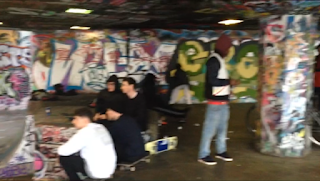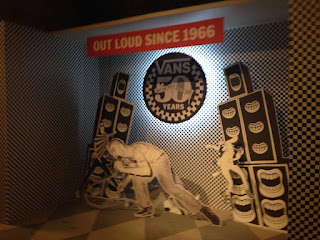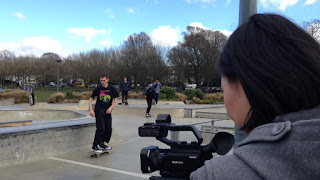Beginning – equilibrium (1-2 minutes)
- Identifying skate culture as “self”
- Questions: what does skate culture mean to you, why do you do it etc.
- Follow skater in one journey like Hill Street
- Location: Somewhere in London, near south bank, Brighton seafront?
- Close up and long shots
- go pro footage
- Inspiration:
Middle – disruption (1 minute)
- People saying why they disagree with skateboarding
- Location: People along south bank
- One person in their house, mum/teacher or something
- Questions: how do you feel about skate boarding, what negative prejudices do you have towards it?
- Visuals: archive footage of skaters misbehaving
Middle – Recognition (1 minute)
- Skaters acknowledging its misconceptions
- Questions: What preconceptions do you think people have with skate culture, etc.
- Locations: Southbank, House of Vans, The Level
- Visuals: Skaters hanging out with each other in big groups, looking anti-social, smoking etc.
Middle – Attempt (1-2 minutes)
- Justifying its culture, influence on mainstream culture, community aspects
- Visuals: fast paced shots of skaters performing tricks, cutaway footage to match things they’re talking about
End - New equilibrium (1 minute)
- Conclusive points on skate culture
- Location: Film during sunset at Hove Lagoon/The Level
- Visuals: Get some cliché looking into the sunset shots
- Questions: do you think people will change their minds about skate culture?
- Would you ever change because of what others think?

















































